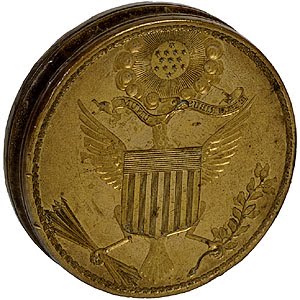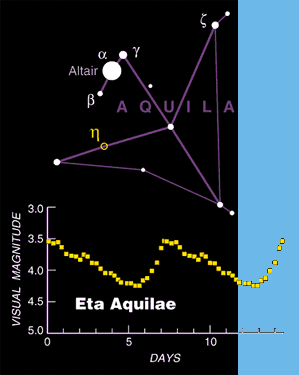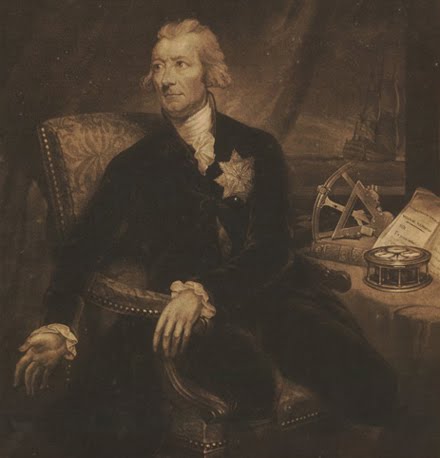fig.1 impression of Thomson's 1782 Great Seal
(reconstructed by Walter Manton, 1892) Congressional Record, U.S.A., June 1782, and published in Columbian Magazine 1786:
Heraldic specification of the seal's obverse (front side): Arms:
Paleways of thirteen pieces Argent and Gules:
a Chief, Azure. The Escutcheon on the breast of the American
bald Eagle displayed, proper, holding in his dexter talon an Olive branch, and in his sinister a bundle of thirteen arrows, all proper, & in his beak a scroll, inscribed with this Motto.
"E pluribus unum".– For the Crest:
Over the head of the Eagle
which appears above the Escutcheon, A Glory, Or, breaking through a cloud, proper,
& surrounding thirteen stars forming a Constellation, Argent, on an Azure field.– Explanatory notes (also published in both the above sources):
The Escutcheon is composed of the chief & pale, the two most
honorable ordinaries. The Pieces, paly, represent the several states
all joined in one solid compact entire, supporting a Chief, which unites
the whole & represents Congress. The Motto alludes to this union.
The pales in the arms are kept closely united by the chief and the Chief
depends upon that union & the strength resulting from it for its
support, to denote the Confederacy of the United States of America &
the preservation of their union through Congress.
The colours of the pales are those used in the flag of the
United States of America; White signifies purity and innocence, Red,
hardiness & valor, and Blue, the colour of the Chief signifies
vigilance, perseverance & justice. The Olive branch and arrows
denote the power of peace & war which is exclusively vested in
Congress. The Constellation denotes a new State taking its place and
rank among other sovereign powers. The Escutcheon is born on the breast
of an American Eagle without any other supporters to denote that the
United States of America ought to rely on their own Virtue.
 fig.2 extant worn die of the Great Seal from the period 1782-1841  fig 3. Arms of The Dutch Republic created ca.1580AD, as decribed in the verbal description given at: John Adams said of the Dutch Republic and his new republic of the United States of America: "The origins of the two republics are so much alike that the history of one seems but a transcript from that of the other"  fig.4 Hevelius' new Shield constellation (Scutum Sobiescian) and the three arrows surrounding his Eagle constellation (Sagitta's, Antinous' & Sagittarius')  fig.5 Eta Aquilae's position in the Eagle, and regular varying brightness. Apart from its possible use as "equator star" in the late sixteenth century the other curious property of Eta Aquilae is its variable brightness graphed above. This
property of our star was only officially discovered in late 1784, by
Edward Pigott, after two years of observational work on variable
magnitude stars with John Goodricke in York England.. This synchrony
between the covert appearance of Eta Aquilae, encoded into Thomson's
U.S. Seal, and the renewed British interest in variable stars (which led
two yeas later, to the discovery of Eta Aquilae's weekly variability)
may be more than just coincidence. For there is a character, John
Maurice, who straddles all three worlds of (i) international diplomacy
(being an ambassador himself from Saxony to Britain and even in touch
with Benjamin Franklin in Paris), (ii) the circle of English
astronomers around William Herschel which included Piggot and Goodricke
(Maurice being himself an avid and competent mathematical astronomer and
a good friend to King George III's personal astronomer) and (iii) the
world of late sixteenth century English astronomers by virtue of his
discovery of the "Waste mathematical papers" of the Elizabethan/Jacobean
astronomer Thomas Harriot, at Petworth (a country mansion of Harriot's
patron the Earl of Northumberland) where they had lain undiscovered for
more than 150 years before Maurice's status as second husband to the
Dowager Countess of Egmont gave him the opportunity to find and study
them in privacy, while Petworth was entrusted to his wife (pending the
coming of age of the rightful male heir to Northumberland's
property).  |
According to U.S. government publications, the Continental Congress
began the design process of the Seal of the United States in July of
1776.
The official histories describe how multiple congressional committees
and their consultants amassed dozens of suggested elements over the
ensuing 70 months of the Revolutionary War, without gaining
congressional approval for any proposed design made up from selections
of these proliferating elements.
Then, after a new committee, and a new heraldic consultant in early May
of 1782, failed to come up with anything practical for an obverse (front
side of the Seal), the Secretary of Congress took charge, on June
13th., of the whole design. Consequently, the verbal description at left
(below fig.1) using just about half a dozen of the amassed collection
of elements, was presented to Congress by its Secretary, Charles
Thomson, as a design for the obverse side of a two-sided seal. This
description was finally approved for execution, by that very session of
the Continental Congress on June 20th. 1782.
While Thomson's upright
character and honesty would certainly not allow him to present deceptive
or false explanations to congress, his role as the keeper of congressional secret affairs would
certainly allow him to omit from the public record any additional
intended meanings of the seal's official heraldic specification that he
or any fellow congressional conspirators deemed unfitted (and
unnecessary) for public edification. A memo (with an enclosure now
missing) that he later sent to James Madison proves that Thomson did
indeed intend a covert set of alternative meanings**.
I therefore note that one
full half of the heraldic design (i.e. the Crest) gets a mere
single sentence of explanation by Thomson; viz. "The Constellation
denotes a new State taking its place and rank among other sovereign
powers" and the large central Eagle (which had no precedent in the
proliferating elements prior to June 1782) is specified as "bald" but
explained only as "American" and as symbolic of a Virtue of
America.
It may thus be instructive to
consider how additional unstated meanings, construable to an eagle or a
constellation of stars, could represent a Virtue or Silver Lining of the
United States of America and/or even facilitate this "new state taking
its place and rank among other sovereign powers", in a situation where
France and Holland had already recognised the new American nation, but
the British Crown, having ceased most hostile action in America on the
advice of Rockingham, its new Prime Minister, still refused to
acknowledge American independence, even tacitly.
To do this we first need to
consider the immediately forseeable uses of this seal and examine the
actual pictorial content of the very first instantiation (as a
die) of the congressionally approved design.
A resulting bronze die of the
obverse side (but not the reverse) was indeed soon commissioned and
delivered by Thomson (of which the top left illustration, fig.1, is
ostensibly a true facsimile of that die's impression, according to the
1892 State Department monograph, "The Seal of the United States").
It was certainly acquired
for congress, before September 1782 by their Secretary, Charles
Thomson (its official keeper until 1789) and he and the temporary
president of congress, Hanson, first used it in that month.
Predictably, this first use
was to vest General George Washington with the power to treat with the
British Generals in America about prisoners of war, in furtherance of an
end to all hostilities and thus bring closer a formal and final end to
the Revolutionary War. Whereupon, Franklin in Paris, finally got
the British (including a representative of King George) to sit down and
discuss American Independence, a discussion which would lead, in
November, to a formal signing of Provisional Articles of Independence.
We now note certain liberties taken with the approved heraldic prescription.
First, the
eagle of the die does not appear to be an "American bald Eagle" since
it has the eagle's "crest" of most species of eagle (which are thus not
bald). This may have been done to emphasize its generic eagleness and/or
to establish a verbal link between the Crest of Stars and the "crest"
of the eagle, since...
Second, the eagle's head has been made to protrude through the clouds surrounding the Constellation, and....
Third, the
radiating lines of the "gold" glory are not properly heraldically
represented as a series of dots, with the effects that (a) the
motto in the eagle's beak can now apply as equally to the Constellation
of the heraldic Crest as it does to the Escutcheon of the heraldic Arms
and (b) there are unbroken lines of glory directly connecting the silver
constellation of the heraldic Crest to the anomalous "crest" of the
Virtuous Eagle, perhaps positing some equivalence between the
constellated Crest of stars and a crested bird.
Fourth,
the Constellation itself disobeys the heraldic convention of a random
arrangement of stars (obeyed in all extant illustrations of previously
proposed uses of a Constellation in the long-desired U.S. seal).
Instead, the Constellation of six-pointed stars was itself arranged in
the form of a six-pointed star surrounding a single central star. This
departure from the rules of heraldry not only emphasizes the
applicability to this star-of-stars of the motto, E PLURIBUS UNUM, in its overt meaning (one whiole from many parts) but
also allows the unique central star to be an alternative UNUM in the
motto's alternate classical interpretation as "one chosen from among
many".
Fifth, reflecting the seven
tail feathers of the Eagle, the clutch of thirteen arrows was
(according to Walter Manton, State Department illustrator, 1892)
composed of two groups, an upper group of seven large
arrow points and a lower group of six smaller arrow points squashed up
against the border of acanthus leaves. This emphasis of seven of the
thirteen arrows not only suggests that Thomson intended a deliberate
reference to the original Arms of the Dutch Republic (wherein a lion
rampant clutches seven arrows representing the seven Netherland states
rebelling against Spanish rule, almost exactly two centuries prior in
1581), but it also emphasizes the same differentiation of thirteen
objects displayed on the shield (escutcheon) where there are seven silver
bars and six red bars (though the bars are interleaved rather than, as
the arrows, grouped), and also helps to draw attention to the position
of the central UNUM of the thirteen stars as the seventh star, using any conventional reading order (left to right, top to bottom, right to left or bottom to top) of the silver constellation.
The
combined effect of all five of these peculiar liberties is to strongly
suggest an alternative symbolism designed to declare the identity of a
particular star in a particular heavenly constellation which may somehow
help the United States of America to better "its place and rank among
other sovereign powers" particularly its standing with Britain, its
King, George III and his emissaries and military representatives under
the command of his American Generals.
We are now
in a position to identity and name this particular star and to
investigate whether its covert indication on Thomson's seal could have
such political advantage.
The
identification itself, is easy and incontrovertible when we note that
there are only three elements of the seal that can share a name with an
actual celestial constellation or asterism in the European tradition of
Thomson's era.
These are
the Eagle (Aquila, in the conventional latin used to identify stellar
constellations), the Shield (Scutum in latin) and an Arrow (Sagitta in
Latin). That these three latin constellations are actual
neighbours in the sky suggests that we are on the right
track.
Moreover it
seems certain that of the three, Aquila the Eagle would be the
constellation covertly intended by Thomson's seal Crest, since (apart
from the Crest-to-eagle's-crest association noted above) the other two
(Arrow and Shield) were never composed of as many as 13 bright stars and
the Aquila constellation of the British Astronomer Royal Flamsteed, ca.
AD1725, actually contained 5 (alpha, beta, delta, epsilon and eta of
Scutum) of the 7 chief stars previously claimed in AD1690 for Scutum by
its creator, the astronomer Hevelius (see Wagman, M., "Flamsteed's
Missing Stars", Journal for the History of Astronomy, Vol.18, P.209,
1987, pp212–213).
The Eagle
constellation does have about 13 bright stars readily visible to the
naked eye (magnitude 4.5 or brighter) and the seventh in order of brightness (and Greek alphabetic designation) was thus known in Thomson's time as Eta Aquilae (or as Eta Antinous by some) or even possibly by the hebrew name בֶזֶק, or Bazak (in English), since hebrew properties may be indicated by Thomson's Star-of-David style of arrangement. Note that Bazak does begin with the letter B (hebrew Beth) which is also the seventh letter of Thomson's Seal's thirteen letter motto "E PLURIBUS UNUM". Since this alternate astronomical symbolism covers all elements of the obverse of Thomson's Seal except for the olive branch (towards which the eagle is facing), we might interpret this as Thomson's secret offer of peace from his Congress of the United States to King George III (via his emissaries and Generals in America), sealed by a mutual understanding of some deep significance of the star known as Eta Aquilae, Eta Antinous or, under its possible hebrew name, "Bazak". But why under the identity of this obscure star? Could it have something to do with the fact that this star precessed across the celestial equator almost exactly two centuries earlier? By modern retro-calculation this happened during the years 1579-1581, and Eta Aquilae was thus the bright "equator star" not only at the moment of formation of the Dutch Republic of the Seven United Provinces (which had just recognised Thomson's United States in 1781), but also during the first official attempts by the English monarchy to colonise America (Humphrey Gilberts patent from Queen Elizabeth I) and also immediately prior to the Gregorian reform of the calendar (proclaimed by the Pope in Italy in February 1582) which Papal reform's bicentennial was being celebrated in Italy as Thomson designed his Great US Seal. A bright "equator star" in those years, between the announcement of intent (in the Papal calendar commission's "Compendium" published in 1577) and the actual enforcement (Papal Bull of 1582), could indeed have been useful for 16th. century astronomers wishing to check the accuracy of the proposed calendar reform, since the intellectual excuse for disrupting the old Julian calendar was the desire to restore the instant of vernal equinox to the 21st day of March, which instant had regressed back in the old calendar to 10 or 11 March. This regression of the instant of vernal equinox was taken as evidence that the Julian rule (of a leap-year every four years) had created too many leap-years (about one too many every 133 years). The Compendium's Papal reform proposal consisted of omitting 10 dates (most Catholic countries did this in October 1582 or 1583 by jumping from the end of 4 October straight to 15 October instead of to 5 October) in order to bring the equinox forward to the 20th or 21st of March, and to alter the leap-year rule to omit the leap-day in most centurial years (the Compendium recommended that only every fourth century-year should have an extra date in February, e.g. AD1600, 2000, 2400 were still to be leap-years). The instant of vernal equinox is defined astronomically as the yearly occurrence of the Sun's transit northwards across the celestial equator and thus a bright star, in this case Eta Aquilae, on the celestial equator could have served knowledgeable astronomers to uniformly mutually calibrate (during summer meridian passages of Eta Aquilae), then state-of-the-art, 16th. century camera-obscura solar-observatories, for use in the following March for deducing the hour of the equinox by interpolating to the corect equatorial spot between the two consecutive noon meridian passages occurring before and after the instant of equinox. That this same interval of several years before the implementation of the Papal calendar reform also coincided with the English monarchy's first attempts to colonise North America (by Queen Elizabeth's 1578 patent directing Sir Humphrey Gilbert and his fleet to do so within six years) suggests Thomson may have believed that these three 200-year old events (calendar reform, Eta Aquilae on the equator and the English monarchy's first overt interest in colonising America) were somehow connected through some hidden Virtue of America and that this Virtue's secrecy was still valued in Thomson's day by the British monarchy in the person of King George III. ** footnote added by S. Cassidy, July 4, 2010:
Question: Why bother looking for hidden meanings in the US great seal when there is a perfectly good public interpretation of all its elements? Answer: The memo below constitutes sufficient evidence that the Seal conveyed an alternate covert meaning, since the memo was written by the seal's designer, Charles Thomson (1 Dec.1804 to Sec. State, James Madison). The fact that the "enclosed" "explanation" is lost cries out for an honest and historically
informed attempt to reconstruct and explain Charles Thomson's lost covert "Sentiments". ******#******to Madison 1804******#******
Enclosed I send you an explanation of the Device for an armorial Atchievement and Reverse of a Great Seal for the United States in Congress assembled It was drawn up when I made report & contains the Sentiments which I had in mind when I was considering the subject, and which I wished to express covertly by the device. It has never been published nor have I ever given a copy of it. If you think it worth preserving you may lodge it in your office, if not, destroy it. Misc.Letters, Aug-Dec 1804,
folio63, D.S., R.G. 59, entry102, N.A. |